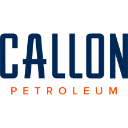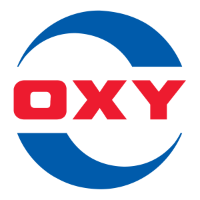FANG

Diamondback Energy, Inc.
FANG
(2.8)173,87 USD
9.77% ROA
14.58% ROE
9.93x PER
57.112.252.675,00 USD
68.66% DER
5.55% Yield
33.68% NPM
Diamondback Energy, Inc. Stock Analysis
Diamondback Energy, Inc. Fundamental Analysis
Fundamental analysis in stock investing is like studying the foundation of a house before buying it. It involves looking at a company's financial health, like its earnings, assets, and debts, to determine if it's a good investment based on its fundamental strength and potential for growth.
| # | Analysis | Rating |
|---|---|---|
| 1 |
ROE
ROE surpassing expectations (23.11%) highlights strong profitability and efficient use of shareholders' equity, making it an appealing investment prospect. |
|
| 2 |
ROA
The stock's ability to make a lot of money from its assets shows that it is very profitable, making it a good choice for people who want to invest and make a lot of money. |
|
| 3 |
DER
The stock has a minimal amount of debt (42%) relative to its ownership, showcasing a strong financial position and lower risk for investors. |
|
| 4 |
Dividend
The company's consistent dividend distribution over the past five years reflects its dedication to providing shareholders with steady returns, making it an appealing choice for investors seeking income stability. |
|
| 5 |
PBV
The stock's PBV ratio (1.81x) indicates a justifiable valuation, presenting a compelling choice for investors seeking reasonable returns. |
|
| 6 |
Assets Growth
Over the past three years, this company's revenue has consistently grown, demonstrating a positive financial trend that makes it an appealing choice. |
|
| 7 |
Graham Number
The company's Graham number suggests that its stock price is underestimated, implying that it may present a compelling investment opportunity. |
|
| 8 |
Revenue Growth
Regrettably, this company's revenue has shown no signs of growth over the past three years, suggesting limited potential for returns and making it a less appealing choice. |
|
| 9 |
Net Profit Growth
Over the past five years, this company's net profit has failed to exhibit any growth, indicating a stagnant financial performance and making it a less favorable choice for potential investors. |
|
| 10 |
Dividend Growth
Investors should note the company's stagnant dividend growth over the past three years, indicating limited profitability and potentially diminishing returns. |
|
| 11 |
Buffet Intrinsic Value
Warren Buffett's formula suggests that the company's stock is overpriced (-1.732), presenting a possible disadvantage for investors as its market price surpasses its estimated intrinsic value. |
Diamondback Energy, Inc. Technical Analysis
Technical analysis in stock investing is like reading the patterns on a weather map to predict future weather conditions. It involves studying past stock price movements and trading volumes to make predictions about where a stock's price might go next, without necessarily looking at the company's financial health.
| # | Analysis | Recommendation |
|---|---|---|
| 1 | Awesome Oscillator | Hold |
| 2 | MACD | Sell |
| 3 | RSI | Hold |
| 4 | Stoch RSI | Sell |
Diamondback Energy, Inc. Price Chart
Financial Statements
Financial statements are like report cards for companies. They show how much money a company makes (income statement), what it owns and owes (balance sheet), and where it spends its money (cash flow statement), helping stock investors understand if a company is healthy and worth investing in.
Income Statements
An income statement for a company is like a scoreboard for its profits and losses. It shows how much money the company made (revenue) and how much it spent to make that money (expenses), helping stock investors see if a company is making a profit or not.
Revenue in stock investing is the total amount of money a company earns from its sales, and it's a key factor that investors consider to assess a company's financial performance and growth potential.
| Year | Revenue | Growth |
|---|---|---|
| 2009 | 12.716.011 | |
| 2010 | 27.253.174 | 53.34% |
| 2011 | 48.671.712 | 44.01% |
| 2012 | 74.962.000 | 35.07% |
| 2013 | 208.002.000 | 63.96% |
| 2014 | 495.718.000 | 58.04% |
| 2015 | 446.733.000 | -10.97% |
| 2016 | 527.107.000 | 15.25% |
| 2017 | 1.205.111.000 | 56.26% |
| 2018 | 2.166.954.000 | 44.39% |
| 2019 | 3.964.000.000 | 45.33% |
| 2020 | 2.813.000.000 | -40.92% |
| 2021 | 6.797.000.000 | 58.61% |
| 2022 | 9.643.000.000 | 29.51% |
| 2023 | 9.360.000.000 | -3.02% |
| 2023 | 8.412.000.000 | -11.27% |
| 2024 | 9.932.000.000 | 15.3% |
Research and Development Expenses are the costs a company incurs to create and improve its products or services, which can be important for investors to evaluate a company's innovation and potential for future growth.
| Year | Research and Development Expenses | Growth |
|---|---|---|
| 2009 | 0 | |
| 2010 | 0 | 0% |
| 2011 | 0 | 0% |
| 2012 | 0 | 0% |
| 2013 | 0 | 0% |
| 2014 | 0 | 0% |
| 2015 | 0 | 0% |
| 2016 | 0 | 0% |
| 2017 | 0 | 0% |
| 2018 | 0 | 0% |
| 2019 | 0 | 0% |
| 2020 | 0 | 0% |
| 2021 | 0 | 0% |
| 2022 | 0 | 0% |
| 2023 | 0 | 0% |
| 2023 | 0 | 0% |
| 2024 | 0 | 0% |
General and Administrative Expenses are the costs a company incurs to run its day-to-day operations, such as office rent, salaries, and utilities, which investors consider to understand a company's overall efficiency and management effectiveness.
| Year | General and Administrative Expenses | Growth |
|---|---|---|
| 2009 | 0 | |
| 2010 | 0 | 0% |
| 2011 | 0 | 0% |
| 2012 | 10.376.000 | 100% |
| 2013 | 11.036.000 | 5.98% |
| 2014 | 21.266.000 | 48.1% |
| 2015 | 31.968.000 | 33.48% |
| 2016 | 42.619.000 | 24.99% |
| 2017 | 48.669.000 | 12.43% |
| 2018 | 64.554.000 | 24.61% |
| 2019 | 104.000.000 | 37.93% |
| 2020 | 88.000.000 | -18.18% |
| 2021 | 146.000.000 | 39.73% |
| 2022 | 144.000.000 | -1.39% |
| 2023 | 136.000.000 | -5.88% |
| 2023 | 150.000.000 | 9.33% |
| 2024 | 184.000.000 | 18.48% |
EBITDA stands for Earnings Before Interest, Taxes, Depreciation, and Amortization. It is a measure that helps stock investors analyze a company's profitability by looking at its earnings without considering certain expenses. This helps to get a clearer picture of the company's financial performance and its ability to generate cash flow.
| Year | EBITDA | Growth |
|---|---|---|
| 2009 | 4.553.677 | |
| 2010 | 17.235.483 | 73.58% |
| 2011 | 4.798.607 | -259.18% |
| 2012 | 48.363.000 | 90.08% |
| 2013 | 159.309.000 | 69.64% |
| 2014 | 509.475.000 | 68.73% |
| 2015 | -489.060.000 | 204.17% |
| 2016 | 55.047.000 | 988.44% |
| 2017 | 866.073.000 | 93.64% |
| 2018 | 1.826.270.999 | 52.58% |
| 2019 | 2.788.000.000 | 34.5% |
| 2020 | -4.264.000.000 | 165.38% |
| 2021 | 4.376.000.000 | 197.44% |
| 2022 | 7.338.000.000 | 40.37% |
| 2023 | 6.368.000.000 | -15.23% |
| 2023 | 6.171.000.000 | -3.19% |
| 2024 | 6.568.000.000 | 6.04% |
Gross profit is the money a company makes from selling its products or services after subtracting the cost of producing or providing them, and it is an important measure for investors to understand a company's profitability.
| Year | Gross Profit | Growth |
|---|---|---|
| 2009 | 12.010.852 | |
| 2010 | 24.989.178 | 51.94% |
| 2011 | 44.403.139 | 43.72% |
| 2012 | 27.781.000 | -59.83% |
| 2013 | 106.431.000 | 73.9% |
| 2014 | 234.403.000 | 54.59% |
| 2015 | 107.330.000 | -118.39% |
| 2016 | 220.602.000 | 51.35% |
| 2017 | 655.080.000 | 66.32% |
| 2018 | 1.108.288.000 | 40.89% |
| 2019 | 1.600.000.000 | 30.73% |
| 2020 | 644.000.000 | -148.45% |
| 2021 | 4.231.000.000 | 84.78% |
| 2022 | 6.778.000.000 | 37.58% |
| 2023 | 8.700.000.000 | 22.09% |
| 2023 | 4.871.000.000 | -78.61% |
| 2024 | 4.896.000.000 | 0.51% |
Net income in stock investing is like the money a company actually gets to keep as profit after paying all its bills, and it's an important measure to understand how well a company is doing financially.
| Year | Net Profit | Growth |
|---|---|---|
| 2009 | -2.706.082 | |
| 2010 | 8.216.219 | 132.94% |
| 2011 | -545.051 | 1607.42% |
| 2012 | 11.829.000 | 104.61% |
| 2013 | 54.587.000 | 78.33% |
| 2014 | 193.755.000 | 71.83% |
| 2015 | -550.628.000 | 135.19% |
| 2016 | -165.034.000 | -233.65% |
| 2017 | 482.261.000 | 134.22% |
| 2018 | 845.672.000 | 42.97% |
| 2019 | 240.000.000 | -252.36% |
| 2020 | -4.672.000.000 | 105.14% |
| 2021 | 2.182.000.000 | 314.12% |
| 2022 | 4.386.000.000 | 50.25% |
| 2023 | 3.660.000.000 | -19.84% |
| 2023 | 3.143.000.000 | -16.45% |
| 2024 | 3.348.000.000 | 6.12% |
EPS, or earnings per share, is a measure that shows how much profit a company has earned for each outstanding share of its stock, and it is important for stock investors as it helps understand the profitability of a company and compare it with other companies in the market.
| Year | Earning per Share (EPS) | Growth |
|---|---|---|
| 2009 | 0 | |
| 2010 | 0 | 0% |
| 2011 | 0 | 0% |
| 2012 | -1 | 0% |
| 2013 | 1 | 100% |
| 2014 | 4 | 66.67% |
| 2015 | -9 | 137.5% |
| 2016 | -2 | -300% |
| 2017 | 5 | 150% |
| 2018 | 8 | 50% |
| 2019 | 1 | -700% |
| 2020 | -30 | 103.45% |
| 2021 | 12 | 341.67% |
| 2022 | 25 | 50% |
| 2023 | 20 | -20% |
| 2023 | 17 | -17.65% |
| 2024 | 19 | 5.56% |
Cashflow Statements
Cashflow statements show the movement of money in and out of a company, helping stock investors understand how much money a company makes and spends. By examining cashflow statements, investors can assess if a company is generating enough cash to pay its bills, invest in growth, and provide returns to stockholders.
Free cash flow is the leftover cash that a company generates after covering its operating expenses and capital expenditures, which is important for stock investors as it shows how much money a company has available to invest in growth, pay dividends, or reduce debt.
| Year | Free Cashflow | Growth |
|---|---|---|
| 2009 | -23.930.025 | |
| 2010 | -49.088.342 | 51.25% |
| 2011 | -52.060.387 | 5.71% |
| 2012 | -126.797.000 | 58.94% |
| 2013 | -784.146.000 | 83.83% |
| 2014 | -1.091.187.000 | 28.14% |
| 2015 | -485.586.000 | -124.72% |
| 2016 | -859.087.000 | 43.48% |
| 2017 | -2.413.212.000 | 64.4% |
| 2018 | -1.918.320.000 | -25.8% |
| 2019 | -968.000.000 | -98.17% |
| 2020 | 74.000.000 | 1408.11% |
| 2021 | 1.645.000.000 | 95.5% |
| 2022 | 2.820.000.000 | 41.67% |
| 2023 | 506.000.000 | -457.31% |
| 2023 | 1.206.000.000 | 58.04% |
| 2024 | 892.000.000 | -35.2% |
Operating cash flow represents the cash generated or consumed by a company's day-to-day operations, excluding external investing or financing activities, and is crucial for stock investors as it shows how much cash a company is generating from its core business operations.
| Year | Operating Cashflow | Growth |
|---|---|---|
| 2009 | 2.701.566 | |
| 2010 | 5.175.824 | 47.8% |
| 2011 | 30.384.194 | 82.97% |
| 2012 | 49.692.000 | 38.85% |
| 2013 | 155.777.000 | 68.1% |
| 2014 | 356.389.000 | 56.29% |
| 2015 | 416.501.000 | 14.43% |
| 2016 | 332.080.000 | -25.42% |
| 2017 | 888.625.000 | 62.63% |
| 2018 | 1.564.505.000 | 43.2% |
| 2019 | 2.734.000.000 | 42.78% |
| 2020 | 2.118.000.000 | -29.08% |
| 2021 | 3.944.000.000 | 46.3% |
| 2022 | 6.325.000.000 | 37.64% |
| 2023 | 1.358.000.000 | -365.76% |
| 2023 | 5.920.000.000 | 77.06% |
| 2024 | 1.529.000.000 | -287.18% |
Capex, short for capital expenditures, refers to the money a company spends on acquiring or upgrading tangible assets like buildings, equipment, or technology, which is important for stock investors as it indicates how much a company is investing in its infrastructure to support future growth and profitability.
| Year | Capital Expenditure | Growth |
|---|---|---|
| 2009 | 26.631.591 | |
| 2010 | 54.264.166 | 50.92% |
| 2011 | 82.444.581 | 34.18% |
| 2012 | 176.489.000 | 53.29% |
| 2013 | 939.923.000 | 81.22% |
| 2014 | 1.447.576.000 | 35.07% |
| 2015 | 902.087.000 | -60.47% |
| 2016 | 1.191.167.000 | 24.27% |
| 2017 | 3.301.837.000 | 63.92% |
| 2018 | 3.482.825.000 | 5.2% |
| 2019 | 3.702.000.000 | 5.92% |
| 2020 | 2.044.000.000 | -81.12% |
| 2021 | 2.299.000.000 | 11.09% |
| 2022 | 3.505.000.000 | 34.41% |
| 2023 | 852.000.000 | -311.38% |
| 2023 | 4.714.000.000 | 81.93% |
| 2024 | 637.000.000 | -640.03% |
Balance Sheet
Balance sheets provide a snapshot of a company's financial health and its assets (such as cash, inventory, and property) and liabilities (like debts and obligations) at a specific point in time. For stock investors, balance sheets help assess the company's overall worth and evaluate its ability to meet financial obligations and support future growth.
Equity refers to the ownership interest or stake that shareholders have in a company, representing their claim on its assets and earnings after all debts and liabilities are paid.
| Year | Equity | Growth |
|---|---|---|
| 2009 | 84.202.211 | |
| 2010 | 105.638.043 | 20.29% |
| 2011 | 114.847.282 | 8.02% |
| 2012 | 462.068.000 | 75.14% |
| 2013 | 845.541.000 | 45.35% |
| 2014 | 1.985.213.000 | 57.41% |
| 2015 | 2.108.973.000 | 5.87% |
| 2016 | 4.018.292.000 | 47.52% |
| 2017 | 5.581.737.000 | 28.01% |
| 2018 | 14.166.262.000 | 60.6% |
| 2019 | 14.906.000.000 | 4.96% |
| 2020 | 9.804.000.000 | -52.04% |
| 2021 | 13.245.000.000 | 25.98% |
| 2022 | 15.690.000.000 | 15.58% |
| 2023 | 17.430.000.000 | 9.98% |
| 2023 | 16.984.000.000 | -2.63% |
| 2024 | 18.527.000.000 | 8.33% |
Assets represent the valuable resources that a company owns, such as cash, inventory, property, and equipment, and understanding a company's assets helps investors assess its value and potential for generating future profits.
| Year | Assets | Growth |
|---|---|---|
| 2009 | 100.072.609 | |
| 2010 | 172.516.696 | 41.99% |
| 2011 | 249.483.885 | 30.85% |
| 2012 | 606.701.000 | 58.88% |
| 2013 | 1.521.614.000 | 60.13% |
| 2014 | 3.095.481.000 | 50.84% |
| 2015 | 2.758.412.000 | -12.22% |
| 2016 | 5.349.680.000 | 48.44% |
| 2017 | 7.770.985.000 | 31.16% |
| 2018 | 21.595.687.000 | 64.02% |
| 2019 | 23.531.000.000 | 8.22% |
| 2020 | 17.619.000.000 | -33.55% |
| 2021 | 22.898.000.000 | 23.05% |
| 2022 | 26.209.000.000 | 12.63% |
| 2023 | 29.001.000.000 | 9.63% |
| 2023 | 28.049.000.000 | -3.39% |
| 2024 | 35.637.000.000 | 21.29% |
Liabilities refer to the financial obligations or debts that a company owes to creditors or external parties, and understanding a company's liabilities is important for investors as it helps assess the company's financial risk and ability to meet its obligations.
| Year | Liabilities | Growth |
|---|---|---|
| 2009 | 15.870.398 | |
| 2010 | 66.878.653 | 76.27% |
| 2011 | 134.636.603 | 50.33% |
| 2012 | 144.633.000 | 6.91% |
| 2013 | 676.073.000 | 78.61% |
| 2014 | 1.110.268.000 | 39.11% |
| 2015 | 649.439.000 | -70.96% |
| 2016 | 1.331.388.000 | 51.22% |
| 2017 | 2.189.248.000 | 39.19% |
| 2018 | 7.429.425.000 | 70.53% |
| 2019 | 8.625.000.000 | 13.86% |
| 2020 | 7.815.000.000 | -10.36% |
| 2021 | 9.653.000.000 | 19.04% |
| 2022 | 10.519.000.000 | 8.23% |
| 2023 | 11.571.000.000 | 9.09% |
| 2023 | 11.065.000.000 | -4.57% |
| 2024 | 17.110.000.000 | 35.33% |
Diamondback Energy, Inc. Financial Ratio (TTM)
Valuation Metrics
- Revenue per Share
- 51.96
- Net Income per Share
- 19.51
- Price to Earning Ratio
- 9.93x
- Price To Sales Ratio
- 6.16x
- POCF Ratio
- 5.91
- PFCF Ratio
- 25.07
- Price to Book Ratio
- 1.98
- EV to Sales
- 6.71
- EV Over EBITDA
- 9.56
- EV to Operating CashFlow
- 10.64
- EV to FreeCashFlow
- 27.3
- Earnings Yield
- 0.1
- FreeCashFlow Yield
- 0.04
- Market Cap
- 57,11 Bil.
- Enterprise Value
- 62,18 Bil.
- Graham Number
- 207.23
- Graham NetNet
- -53.54
Income Statement Metrics
- Net Income per Share
- 19.51
- Income Quality
- 1.62
- ROE
- 0.21
- Return On Assets
- 0.05
- Return On Capital Employed
- 0.07
- Net Income per EBT
- 0.74
- EBT Per Ebit
- 1.04
- Ebit per Revenue
- 0.44
- Effective Tax Rate
- 0.22
Margins
- Sales, General, & Administrative to Revenue
- 0.02
- Research & Developement to Revenue
- 0
- Stock Based Compensation to Revenue
- 0.01
- Gross Profit Margin
- 0.63
- Operating Profit Margin
- 0.44
- Pretax Profit Margin
- 0.46
- Net Profit Margin
- 0.34
Dividends
- Dividend Yield
- 0.06
- Dividend Yield %
- 5.55
- Payout Ratio
- 0.47
- Dividend Per Share
- 10.76
Operating Metrics
- Operating Cashflow per Share
- 32.77
- Free CashFlow per Share
- 12.77
- Capex to Operating CashFlow
- 0.61
- Capex to Revenue
- 0.38
- Capex to Depreciation
- 1.91
- Return on Invested Capital
- 0.09
- Return on Tangible Assets
- 0.1
- Days Sales Outstanding
- 32.69
- Days Payables Outstanding
- 35.21
- Days of Inventory on Hand
- 5.85
- Receivables Turnover
- 11.17
- Payables Turnover
- 10.37
- Inventory Turnover
- 62.38
- Capex per Share
- 20
Balance Sheet
- Cash per Share
- 38,75
- Book Value per Share
- 103,87
- Tangible Book Value per Share
- 103.87
- Shareholders Equity per Share
- 97.82
- Interest Debt per Share
- 67.65
- Debt to Equity
- 0.69
- Debt to Assets
- 0.34
- Net Debt to EBITDA
- 0.78
- Current Ratio
- 3.66
- Tangible Asset Value
- 18,53 Bil.
- Net Current Asset Value
- -9,29 Bil.
- Invested Capital
- 32787000000
- Working Capital
- 5,69 Bil.
- Intangibles to Total Assets
- 0
- Average Receivables
- 0,89 Bil.
- Average Payables
- 0,29 Bil.
- Average Inventory
- 56000000
- Debt to Market Cap
- 0.21
Dividends
Dividends in stock investing are like rewards that companies give to their shareholders. They are a portion of the company's profits distributed to investors, typically in the form of cash payments, as a way for them to share in the company's success.
| Year | Dividends | Growth |
|---|---|---|
| 2018 | 0 | |
| 2019 | 1 | 0% |
| 2020 | 2 | 100% |
| 2021 | 2 | 0% |
| 2022 | 9 | 87.5% |
| 2023 | 8 | -14.29% |
| 2024 | 7 | 0% |
Diamondback Energy, Inc. Profile
About Diamondback Energy, Inc.
Diamondback Energy, Inc., an independent oil and natural gas company, focuses on the acquisition, development, exploration, and exploitation of unconventional and onshore oil and natural gas reserves in the Permian Basin in West Texas. It focuses on the development of the Spraberry and Wolfcamp formations of the Midland basin; and the Wolfcamp and Bone Spring formations of the Delaware basin, which are part of the Permian Basin in West Texas and New Mexico. As of December 31, 2021, the company's total acreage position was approximately 524,700 gross acres in the Permian Basin; and estimated proved oil and natural gas reserves were 1,788,991 thousand barrels of crude oil equivalent. It also held working interests in 5,289 gross producing wells, as well as royalty interests in 6,455 additional wells. In addition, the company owns mineral interests approximately 930,871 gross acres and 27,027 net royalty acres in the Permian Basin and Eagle Ford Shale; and owns, operates, develops, and acquires midstream infrastructure assets, including 866 miles of crude oil gathering pipelines, natural gas gathering pipelines, and an integrated water system in the Midland and Delaware Basins of the Permian Basin. Diamondback Energy, Inc. was founded in 2007 and is headquartered in Midland, Texas.
- CEO
- Mr. Travis D. Stice
- Employee
- 1.023
- Address
-
500 West Texas Avenue
Midland, 79701
Diamondback Energy, Inc. Executives & BODs
| # | Name | Age |
|---|---|---|
| 1 |
Mr. P. Matt Zmigrosky Executive Vice President, Chief Legal & Administrative Officer and Secretary |
70 |
| 2 |
Mr. Greg Dolezal Vice President & Chief Information Officer |
70 |
| 3 |
Ms. Teresa L. Dick CPA Chief Accounting Officer, Executive Vice President & Assistant Secretary |
70 |
| 4 |
Mr. Adam T. Lawlis Vice President of Investor Relations |
70 |
| 5 |
Mr. Matthew Kaes Van't Hof President & Chief Financial Officer |
70 |
| 6 |
Mr. Travis D. Stice Chief Executive Officer & Chairman of the Board |
70 |
| 7 |
Mr. Daniel N. Wesson Executive Vice President & Chief Operating Officer |
70 |
| 8 |
Mr. David L. Cannon Senior Vice President of Geoscience & Technology |
70 |
| 9 |
Mr. Jere W. Thompson III Executive Vice President of Strategy & Corporate Development |
70 |
| 10 |
Mr. Johnny D. Dossey Vice President of Marketing |
70 |












